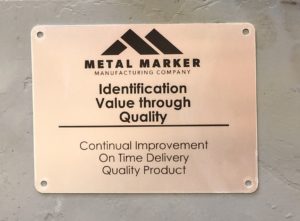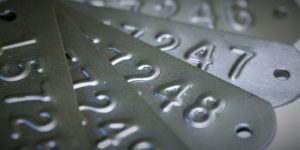We rely on our cell phones, electrical utilities, and other essentials in our modern lives.
In order to keep these services operating, telecommunications workers must climb to daunting heights to service and maintain cell phone and utility towers.
While the occupation presents a great deal of risk, there are many precautions and safeguards in place to prevent accidents before they happen. Safety gear such as harnesses, wire ropes, hooks, and carabiners are essential to a safe ascent.
Another essential component is safety identification tags. Telecommunications tower tags provide safety information to the people who rely on it most.
Tower Climbing Safety/Regulations
Workers who are tasked with ascending cell phone and utility towers face serious risks if they do not follow correct procedures. A fall from those heights can easily be fatal.
As such, many safety precautions and regulations are in place to prevent any potential injury.
Climbers must adhere to strict safety guidelines. A large majority of which are specified in ANSI Z359. This fall prevention protocol sets forth industry standards for wire rope ascension of towers.
Identification Guidelines
A key component to safety is knowledge. Knowing exactly what your equipment’s tolerances and capabilities are can make the difference between a proper use and a potential risk.
Identification tags are one of the main elements of tower safety. They ensure the worker operating the climbing equipment knows their gear is rated to withstand the forces necessary. Capacity nameplates ensure they do not over exert their limits.
The Safety Equipment Manufacturing Committee (SEMC) set forth their own industry-wide standards for identification tags.
These safety nameplates must be legible, and near the base of the tower so they cannot be missed. The tags must include information such as:
- Cable type and size
- Minimum anchorage requirements and weight tolerances
- Total number of users permitted
- Manufacturer info and instructions
- Manufacture and install dates
- Serial or other tracking number
This information is absolutely critical to keep workers as safe as possible.
Durability
Longevity is a major consideration when it comes to cell towers. The structures and safety equipment are exposed to the elements constantly.
Identification must be able to remain legible regardless of these conditions. For example, a screen printed tag is not ideal because the ink would quickly fade and wear. Whereas a photo anodized tag will not face these same difficulties.
Both the process and material you select will also play a big role in the type of longevity you will receive
Marking Processes
Photo Anodization
With the durability focus of tower tags, photo anodization is often the go-to process.
Its blend of durability and customization makes it an excellent option for this application. The process embeds a custom design beneath layers of aluminum.

Unlike some other marking methods, photo anodization allows for any design or information to be added. This can include all of the requirements specified by the SEMC as well as any additional designs (company logos, QR codes, etc.).
The 20+ year outdoor durability this process offers provides a long-lasting and effective solution.
Embossing
The embossing process uses a die set to permanently raise a design upwards in the metal material.
This process is limited to simpler designs. Including large amounts of safety information is not really feasible.

Embossing works best when only used for basic designs such as text or sequential numbers.
Often used for numbering inventory and machines, these tags can be used to track and maintain climbing safety equipment.
Materials
As mentioned, durability is key. A successful identification solution not only includes a resilient process, but a durable material to match it.
Some of the most commonly used materials for marking telecom towers include:
- Anodized Aluminum
- Stainless Steel
- Brass
- And More
With the photo anodization process being a great fit for this application, anodized aluminum is a very popular metal substrate used for tower tags.
Wrap-Up
Custom identification tags provide the necessary information to keep workers knowledgeable about their equipment and aid in accident prevention.
By following proper protocol and procedures, workers can be as safe as possible when climbing cell phone towers